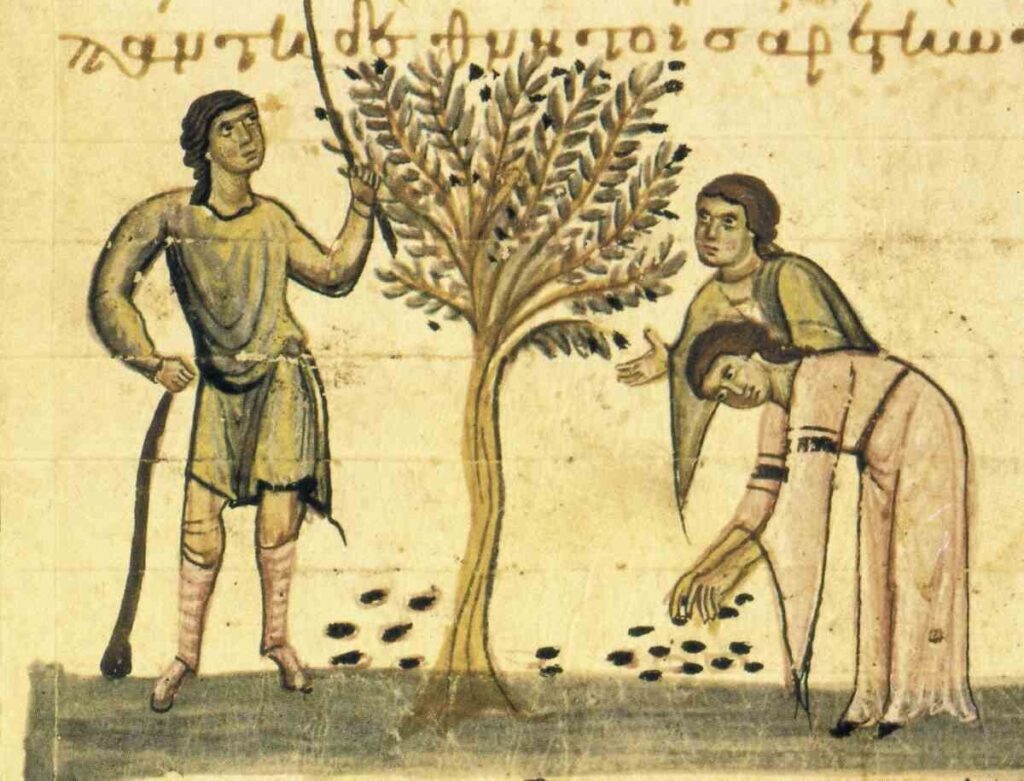Our Story
The Journey of Olive Tree Restoration: A 25-Year Legacy of Axaolivos
Introduction
For the past quarter-century, Axaolivos has dedicated itself to the noble mission of restoring olive trees in Spain. This journey, marked by passion, perseverance, and innovation, has transformed landscapes and livelihoods, breathing new life into ancient groves and fostering a sustainable future. Our commitment to this cause is not merely about business; it is a profound dedication to preserving a cultural heritage and ecological treasure. Join us as we recount the remarkable story of our olive tree restoration efforts over the last 25 years.
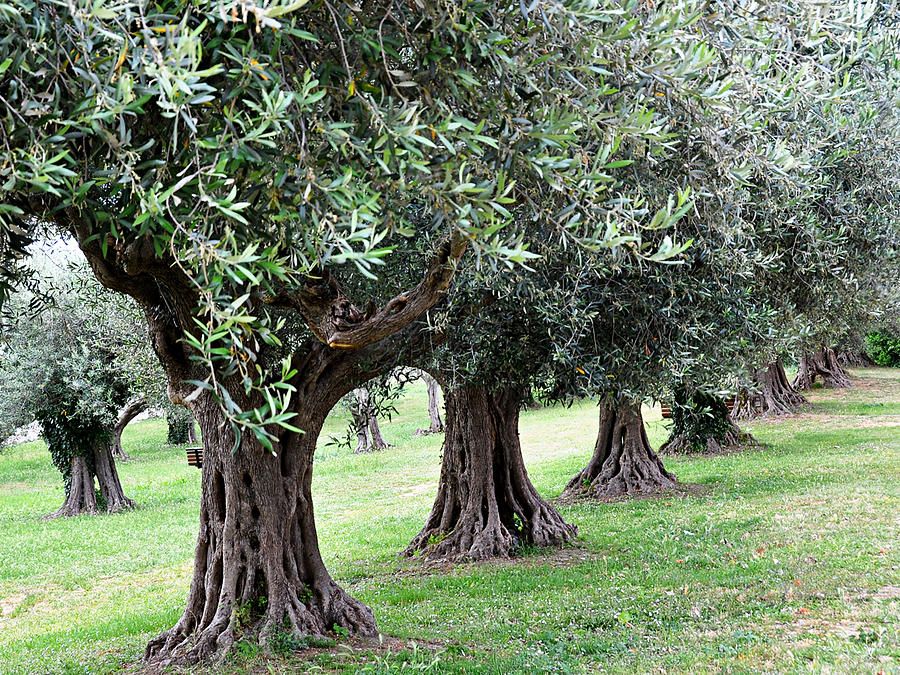
Early Beginnings: A Vision Takes Root (1999-2005)
Our journey began in 1999, in the heart of Malaga, Spain, where Axaolivos was founded. From the outset, we were driven by a vision to not only trade in high-quality Spanish gourmet products but also to contribute meaningfully to the environment. The olive tree, a symbol of peace, wisdom, and prosperity, became the focal point of our restoration efforts.
In the early years, we conducted extensive research to understand the challenges facing olive groves in Spain. Many ancient trees were neglected, suffering from diseases, and unproductive due to age and environmental stress. We collaborated with local farmers, agronomists, and environmentalists to develop a comprehensive restoration plan. This included soil rejuvenation techniques, pest management strategies, and the introduction of modern agricultural practices.
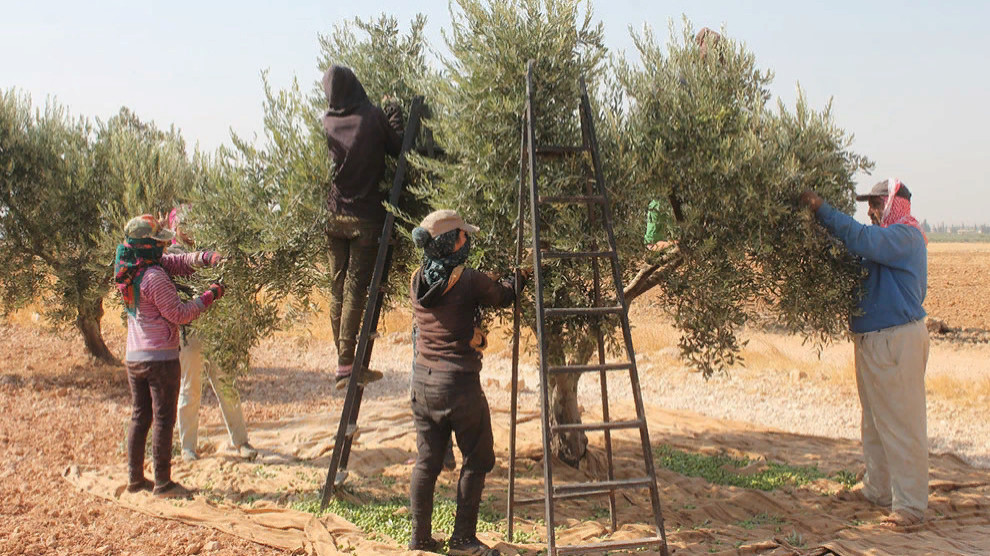 Establishing a Foundation: The First Groves (2006-2010)
Establishing a Foundation: The First Groves (2006-2010)
The initial phase of our restoration project involved selecting pilot sites for olive tree rejuvenation. We identified several abandoned and underperforming groves in Andalusia, a region renowned for its olive oil production. Our team implemented sustainable farming practices, such as organic fertilization and irrigation optimization, to revitalize these groves.
We also invested in training programs for local farmers, sharing knowledge about modern cultivation techniques and the benefits of sustainable farming. This collaborative approach not only improved the health of the olive trees but also empowered the local community with new skills and opportunities.
During this period, we began to see the first signs of success. Olive trees that had once been on the brink of extinction started to flourish, producing high-quality olives and oil. The transformation of these groves was a testament to the effectiveness of our restoration methods and the dedication of our team.
Scaling Up: Expansion and Innovation (2011-2015)
Buoyed by the success of our initial projects, we embarked on an ambitious expansion plan. Between 2011 and 2015, we extended our restoration efforts to additional regions in Spain, including Catalonia, Extremadura, and Castilla-La Mancha. Each region presented unique challenges, from varying soil types to different climatic conditions, requiring tailored restoration strategies.
Innovation played a crucial role in this phase. We invested in cutting-edge technology, such as drone monitoring and precision agriculture, to optimize our restoration efforts. These tools allowed us to monitor the health of the trees in real-time, detect early signs of disease, and implement targeted interventions. Additionally, we introduced new olive tree varieties that were more resilient to pests and environmental stressors, ensuring the long-term sustainability of the groves.
Our commitment to research and development also led to collaborations with universities and research institutions. Together, we conducted studies on the best practices for olive tree cultivation, disease management, and soil health. The findings from these studies not only informed our restoration efforts but also contributed to the broader body of knowledge in sustainable agriculture.
Sustainability and Community Engagement (2016-2020)
As our restoration efforts continued to expand, we recognized the importance of sustainability and community engagement. We adopted a holistic approach to olive tree restoration, integrating environmental, economic, and social considerations.
One of the key initiatives during this period was the implementation of agroforestry practices. By intercropping olive trees with other crops, such as legumes and herbs, we enhanced biodiversity and improved soil health. This not only boosted the productivity of the groves but also provided additional income streams for local farmers.
We also launched community engagement programs to raise awareness about the importance of olive tree restoration. Through workshops, seminars, and outreach activities, we educated local communities about sustainable farming practices and the benefits of preserving olive groves. These initiatives fostered a sense of ownership and pride among the residents, ensuring the long-term success of our restoration efforts.
In addition to community engagement, we focused on reducing our environmental footprint. We implemented renewable energy solutions, such as solar-powered irrigation systems, and adopted eco-friendly packaging for our products. These measures aligned with our commitment to sustainability and reinforced our position as a responsible and forward-thinking company.
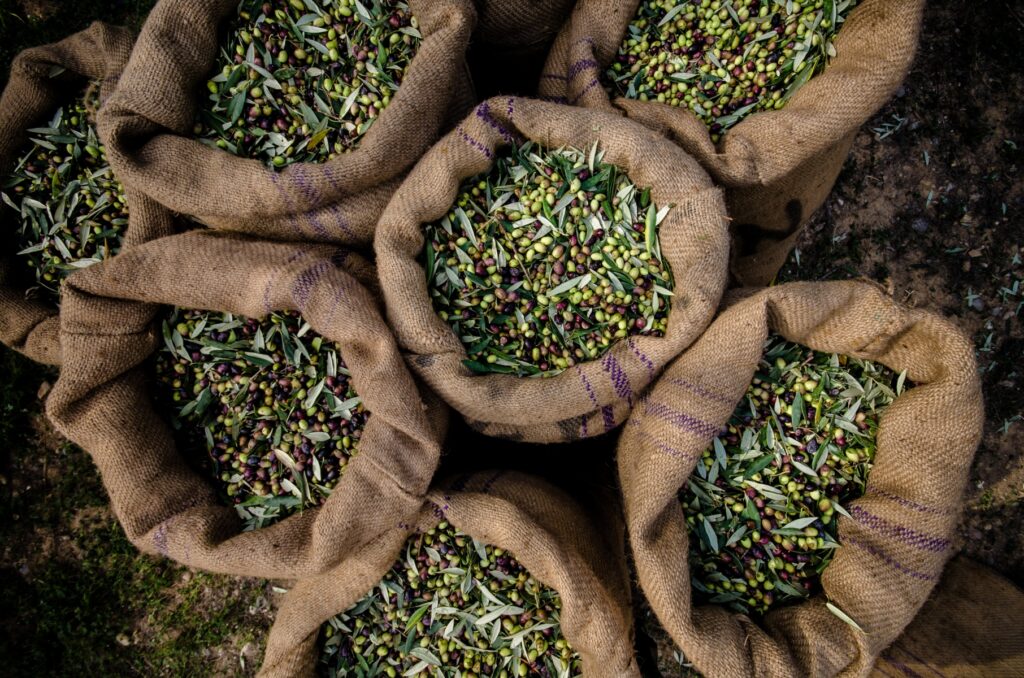
A New Era of Restoration: Challenges and Triumphs (2021-2024)
The last few years have been marked by significant challenges and triumphs. The COVID-19 pandemic disrupted many aspects of life, including agriculture. However, our team’s resilience and adaptability allowed us to navigate these challenges and continue our restoration efforts.
During this period, we faced unprecedented climate conditions, including extreme heatwaves and droughts. These challenges underscored the importance of our work and pushed us to innovate further. We developed advanced irrigation techniques, such as drip irrigation and rainwater harvesting, to conserve water and ensure the health of the olive trees.
We also intensified our research on climate-resilient olive tree varieties and collaborated with international experts to exchange knowledge and best practices. These efforts not only helped us overcome immediate challenges but also positioned us to address future climate-related issues.
Despite these obstacles, our restoration projects continued to yield positive results. We successfully restored numerous groves across Spain, increasing olive production and improving the livelihoods of local farmers. Our high-quality olive oil products gained recognition in international markets, further validating the success of our efforts.
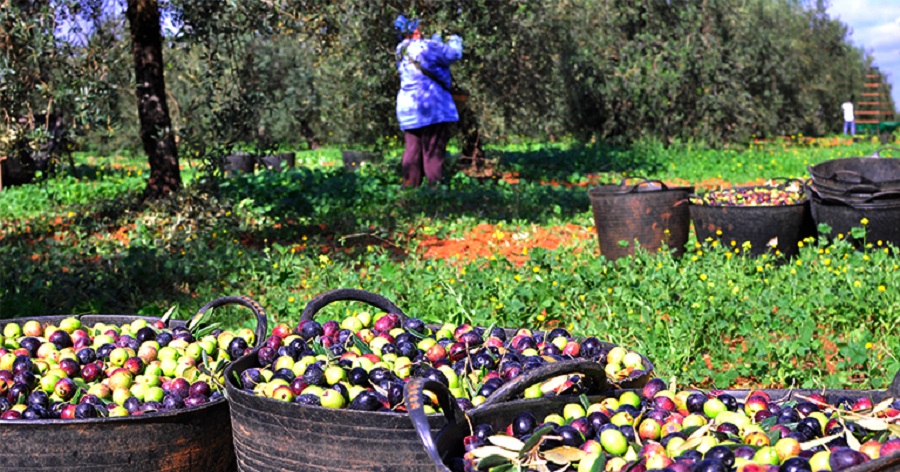
Looking Ahead: The Future of Olive Tree Restoration
As we look to the future, our commitment to olive tree restoration remains unwavering. We aim to expand our restoration projects to new regions and explore innovative solutions to enhance the sustainability and productivity of olive groves.
One of our key focus areas is the integration of digital technology in agriculture. By leveraging data analytics, artificial intelligence, and remote sensing, we can optimize our restoration efforts and make data-driven decisions. These technologies will enable us to monitor the health of the groves more efficiently, predict potential issues, and implement proactive measures.
We also plan to intensify our collaborations with research institutions and industry partners to stay at the forefront of agricultural innovation. By participating in global initiatives and sharing our knowledge, we can contribute to the broader goal of sustainable agriculture and environmental preservation.
Furthermore, we are committed to strengthening our community engagement programs. By empowering local farmers and fostering a sense of community, we can ensure the long-term success of our restoration efforts. We will continue to invest in education and training programs, providing farmers with the tools and knowledge they need to thrive.
Conclusion
The story of Axaolivos’s olive tree restoration efforts is one of passion, perseverance, and innovation. Over the past 25 years, we have transformed abandoned and underperforming groves into thriving, productive landscapes. Our commitment to sustainability, community engagement, and technological innovation has been the cornerstone of our success.
As we celebrate this milestone, we remain dedicated to our mission of restoring olive trees and preserving a cultural and ecological treasure. We invite you to join us on this journey, as we continue to make a positive impact on the environment and the lives of those we serve. Together, we can create a sustainable future for generations to come.
Our Achievements in Numbers
- Number of Olive Trees Restored: Over 100,000
- Regions Covered: Andalusia, Catalonia, Extremadura, Castilla-La Mancha
- Local Farmers Trained: More than 500
- Community Engagement Programs: 50+ workshops and seminars
- Reduction in Water Usage: 30% through advanced irrigation techniques
- Renewable Energy Implementations: Solar-powered irrigation systems in all major groves
- International Recognition: Awards for high-quality olive oil in various global markets
Our Story
The Journey of Olive Tree Restoration: A 25-Year Legacy of Axaolivos
Introduction
For the past quarter-century, Axaolivos has dedicated itself to the noble mission of restoring olive trees in Spain. This journey, marked by passion, perseverance, and innovation, has transformed landscapes and livelihoods, breathing new life into ancient groves and fostering a sustainable future. Our commitment to this cause is not merely about business; it is a profound dedication to preserving a cultural heritage and ecological treasure. Join us as we recount the remarkable story of our olive tree restoration efforts over the last 25 years.
Early Beginnings: A Vision Takes Root (1999-2005)
Our journey began in 1999, in the heart of Malaga, Spain, where Axaolivos was founded. From the outset, we were driven by a vision to not only trade in high-quality Spanish gourmet products but also to contribute meaningfully to the environment. The olive tree, a symbol of peace, wisdom, and prosperity, became the focal point of our restoration efforts.
In the early years, we conducted extensive research to understand the challenges facing olive groves in Spain. Many ancient trees were neglected, suffering from diseases, and unproductive due to age and environmental stress. We collaborated with local farmers, agronomists, and environmentalists to develop a comprehensive restoration plan. This included soil rejuvenation techniques, pest management strategies, and the introduction of modern agricultural practices.
Establishing a Foundation: The First Groves (2006-2010)
The initial phase of our restoration project involved selecting pilot sites for olive tree rejuvenation. We identified several abandoned and underperforming groves in Andalusia, a region renowned for its olive oil production. Our team implemented sustainable farming practices, such as organic fertilization and irrigation optimization, to revitalize these groves.
We also invested in training programs for local farmers, sharing knowledge about modern cultivation techniques and the benefits of sustainable farming. This collaborative approach not only improved the health of the olive trees but also empowered the local community with new skills and opportunities.
During this period, we began to see the first signs of success. Olive trees that had once been on the brink of extinction started to flourish, producing high-quality olives and oil. The transformation of these groves was a testament to the effectiveness of our restoration methods and the dedication of our team.
Scaling Up: Expansion and Innovation (2011-2015)
Buoyed by the success of our initial projects, we embarked on an ambitious expansion plan. Between 2011 and 2015, we extended our restoration efforts to additional regions in Spain, including Catalonia, Extremadura, and Castilla-La Mancha. Each region presented unique challenges, from varying soil types to different climatic conditions, requiring tailored restoration strategies.
Innovation played a crucial role in this phase. We invested in cutting-edge technology, such as drone monitoring and precision agriculture, to optimize our restoration efforts. These tools allowed us to monitor the health of the trees in real-time, detect early signs of disease, and implement targeted interventions. Additionally, we introduced new olive tree varieties that were more resilient to pests and environmental stressors, ensuring the long-term sustainability of the groves.
Our commitment to research and development also led to collaborations with universities and research institutions. Together, we conducted studies on the best practices for olive tree cultivation, disease management, and soil health. The findings from these studies not only informed our restoration efforts but also contributed to the broader body of knowledge in sustainable agriculture.
Sustainability and Community Engagement (2016-2020)
As our restoration efforts continued to expand, we recognized the importance of sustainability and community engagement. We adopted a holistic approach to olive tree restoration, integrating environmental, economic, and social considerations.
One of the key initiatives during this period was the implementation of agroforestry practices. By intercropping olive trees with other crops, such as legumes and herbs, we enhanced biodiversity and improved soil health. This not only boosted the productivity of the groves but also provided additional income streams for local farmers.
We also launched community engagement programs to raise awareness about the importance of olive tree restoration. Through workshops, seminars, and outreach activities, we educated local communities about sustainable farming practices and the benefits of preserving olive groves. These initiatives fostered a sense of ownership and pride among the residents, ensuring the long-term success of our restoration efforts.
In addition to community engagement, we focused on reducing our environmental footprint. We implemented renewable energy solutions, such as solar-powered irrigation systems, and adopted eco-friendly packaging for our products. These measures aligned with our commitment to sustainability and reinforced our position as a responsible and forward-thinking company.
A New Era of Restoration: Challenges and Triumphs (2021-2024)
The last few years have been marked by significant challenges and triumphs. The COVID-19 pandemic disrupted many aspects of life, including agriculture. However, our team’s resilience and adaptability allowed us to navigate these challenges and continue our restoration efforts.
During this period, we faced unprecedented climate conditions, including extreme heatwaves and droughts. These challenges underscored the importance of our work and pushed us to innovate further. We developed advanced irrigation techniques, such as drip irrigation and rainwater harvesting, to conserve water and ensure the health of the olive trees.
We also intensified our research on climate-resilient olive tree varieties and collaborated with international experts to exchange knowledge and best practices. These efforts not only helped us overcome immediate challenges but also positioned us to address future climate-related issues.
Despite these obstacles, our restoration projects continued to yield positive results. We successfully restored numerous groves across Spain, increasing olive production and improving the livelihoods of local farmers. Our high-quality olive oil products gained recognition in international markets, further validating the success of our efforts.
Looking Ahead: The Future of Olive Tree Restoration
As we look to the future, our commitment to olive tree restoration remains unwavering. We aim to expand our restoration projects to new regions and explore innovative solutions to enhance the sustainability and productivity of olive groves.
One of our key focus areas is the integration of digital technology in agriculture. By leveraging data analytics, artificial intelligence, and remote sensing, we can optimize our restoration efforts and make data-driven decisions. These technologies will enable us to monitor the health of the groves more efficiently, predict potential issues, and implement proactive measures.
We also plan to intensify our collaborations with research institutions and industry partners to stay at the forefront of agricultural innovation. By participating in global initiatives and sharing our knowledge, we can contribute to the broader goal of sustainable agriculture and environmental preservation.
Furthermore, we are committed to strengthening our community engagement programs. By empowering local farmers and fostering a sense of community, we can ensure the long-term success of our restoration efforts. We will continue to invest in education and training programs, providing farmers with the tools and knowledge they need to thrive.
Conclusion
The story of Axaolivos’s olive tree restoration efforts is one of passion, perseverance, and innovation. Over the past 25 years, we have transformed abandoned and underperforming groves into thriving, productive landscapes. Our commitment to sustainability, community engagement, and technological innovation has been the cornerstone of our success.
As we celebrate this milestone, we remain dedicated to our mission of restoring olive trees and preserving a cultural and ecological treasure. We invite you to join us on this journey, as we continue to make a positive impact on the environment and the lives of those we serve. Together, we can create a sustainable future for generations to come.
Our Achievements in Numbers
- Number of Olive Trees Restored: Over 100,000
- Regions Covered: Andalusia, Catalonia, Extremadura, Castilla-La Mancha
- Local Farmers Trained: More than 500
- Community Engagement Programs: 50+ workshops and seminars
- Reduction in Water Usage: 30% through advanced irrigation techniques
- Renewable Energy Implementations: Solar-powered irrigation systems in all major groves
- International Recognition: Awards for high-quality olive oil in various global markets
At StAs Global, we specialize in the import and export of premium international food products, including Spanish olives, Spanish hams, Spanish wines, and cheeses. Our extensive network of trusted suppliers and distributors ensures that we deliver only the highest quality products to meet the diverse tastes of our global clientele. Whether you are looking for exquisite Spanish hams, fine wines, or artisanal cheeses from Spain, our selection is curated to satisfy the most discerning palates.
We pride ourselves on providing seamless and efficient service from start to finish. At StAs Global gourmet exports, customer satisfaction is our top priority. We offer personalized solutions tailored to the unique needs of each client, whether you are a small retailer or a large distributor.
Our Story
The Journey of Olive Tree Restoration: A 25-Year Legacy of Axaolivos
Introduction
For the past quarter-century, Axaolivos has dedicated itself to the noble mission of restoring olive trees in Spain. This journey, marked by passion, perseverance, and innovation, has transformed landscapes and livelihoods, breathing new life into ancient groves and fostering a sustainable future. Our commitment to this cause is not merely about business; it is a profound dedication to preserving a cultural heritage and ecological treasure. Join us as we recount the remarkable story of our olive tree restoration efforts over the last 25 years.
Early Beginnings: A Vision Takes Root (1999-2005)
Our journey began in 1999, in the heart of Malaga, Spain, where Axaolivos was founded. From the outset, we were driven by a vision to not only trade in high-quality Spanish gourmet products but also to contribute meaningfully to the environment. The olive tree, a symbol of peace, wisdom, and prosperity, became the focal point of our restoration efforts.
In the early years, we conducted extensive research to understand the challenges facing olive groves in Spain. Many ancient trees were neglected, suffering from diseases, and unproductive due to age and environmental stress. We collaborated with local farmers, agronomists, and environmentalists to develop a comprehensive restoration plan. This included soil rejuvenation techniques, pest management strategies, and the introduction of modern agricultural practices.
Establishing a Foundation: The First Groves (2006-2010)
The initial phase of our restoration project involved selecting pilot sites for olive tree rejuvenation. We identified several abandoned and underperforming groves in Andalusia, a region renowned for its olive oil production. Our team implemented sustainable farming practices, such as organic fertilization and irrigation optimization, to revitalize these groves.
We also invested in training programs for local farmers, sharing knowledge about modern cultivation techniques and the benefits of sustainable farming. This collaborative approach not only improved the health of the olive trees but also empowered the local community with new skills and opportunities.
During this period, we began to see the first signs of success. Olive trees that had once been on the brink of extinction started to flourish, producing high-quality olives and oil. The transformation of these groves was a testament to the effectiveness of our restoration methods and the dedication of our team.
Scaling Up: Expansion and Innovation (2011-2015)
Buoyed by the success of our initial projects, we embarked on an ambitious expansion plan. Between 2011 and 2015, we extended our restoration efforts to additional regions in Spain, including Catalonia, Extremadura, and Castilla-La Mancha. Each region presented unique challenges, from varying soil types to different climatic conditions, requiring tailored restoration strategies.
Innovation played a crucial role in this phase. We invested in cutting-edge technology, such as drone monitoring and precision agriculture, to optimize our restoration efforts. These tools allowed us to monitor the health of the trees in real-time, detect early signs of disease, and implement targeted interventions. Additionally, we introduced new olive tree varieties that were more resilient to pests and environmental stressors, ensuring the long-term sustainability of the groves.
Our commitment to research and development also led to collaborations with universities and research institutions. Together, we conducted studies on the best practices for olive tree cultivation, disease management, and soil health. The findings from these studies not only informed our restoration efforts but also contributed to the broader body of knowledge in sustainable agriculture.
Sustainability and Community Engagement (2016-2020)
As our restoration efforts continued to expand, we recognized the importance of sustainability and community engagement. We adopted a holistic approach to olive tree restoration, integrating environmental, economic, and social considerations.
One of the key initiatives during this period was the implementation of agroforestry practices. By intercropping olive trees with other crops, such as legumes and herbs, we enhanced biodiversity and improved soil health. This not only boosted the productivity of the groves but also provided additional income streams for local farmers.
We also launched community engagement programs to raise awareness about the importance of olive tree restoration. Through workshops, seminars, and outreach activities, we educated local communities about sustainable farming practices and the benefits of preserving olive groves. These initiatives fostered a sense of ownership and pride among the residents, ensuring the long-term success of our restoration efforts.
In addition to community engagement, we focused on reducing our environmental footprint. We implemented renewable energy solutions, such as solar-powered irrigation systems, and adopted eco-friendly packaging for our products. These measures aligned with our commitment to sustainability and reinforced our position as a responsible and forward-thinking company.
A New Era of Restoration: Challenges and Triumphs (2021-2024)
The last few years have been marked by significant challenges and triumphs. The COVID-19 pandemic disrupted many aspects of life, including agriculture. However, our team’s resilience and adaptability allowed us to navigate these challenges and continue our restoration efforts.
During this period, we faced unprecedented climate conditions, including extreme heatwaves and droughts. These challenges underscored the importance of our work and pushed us to innovate further. We developed advanced irrigation techniques, such as drip irrigation and rainwater harvesting, to conserve water and ensure the health of the olive trees.
We also intensified our research on climate-resilient olive tree varieties and collaborated with international experts to exchange knowledge and best practices. These efforts not only helped us overcome immediate challenges but also positioned us to address future climate-related issues.
Despite these obstacles, our restoration projects continued to yield positive results. We successfully restored numerous groves across Spain, increasing olive production and improving the livelihoods of local farmers. Our high-quality olive oil products gained recognition in international markets, further validating the success of our efforts.
Looking Ahead: The Future of Olive Tree Restoration
As we look to the future, our commitment to olive tree restoration remains unwavering. We aim to expand our restoration projects to new regions and explore innovative solutions to enhance the sustainability and productivity of olive groves.
One of our key focus areas is the integration of digital technology in agriculture. By leveraging data analytics, artificial intelligence, and remote sensing, we can optimize our restoration efforts and make data-driven decisions. These technologies will enable us to monitor the health of the groves more efficiently, predict potential issues, and implement proactive measures.
We also plan to intensify our collaborations with research institutions and industry partners to stay at the forefront of agricultural innovation. By participating in global initiatives and sharing our knowledge, we can contribute to the broader goal of sustainable agriculture and environmental preservation.
Furthermore, we are committed to strengthening our community engagement programs. By empowering local farmers and fostering a sense of community, we can ensure the long-term success of our restoration efforts. We will continue to invest in education and training programs, providing farmers with the tools and knowledge they need to thrive.
Conclusion
The story of Axaolivos’s olive tree restoration efforts is one of passion, perseverance, and innovation. Over the past 25 years, we have transformed abandoned and underperforming groves into thriving, productive landscapes. Our commitment to sustainability, community engagement, and technological innovation has been the cornerstone of our success.
As we celebrate this milestone, we remain dedicated to our mission of restoring olive trees and preserving a cultural and ecological treasure. We invite you to join us on this journey, as we continue to make a positive impact on the environment and the lives of those we serve. Together, we can create a sustainable future for generations to come.
Our Achievements in Numbers
- Number of Olive Trees Restored: Over 100,000
- Regions Covered: Andalusia, Catalonia, Extremadura, Castilla-La Mancha
- Local Farmers Trained: More than 500
- Community Engagement Programs: 50+ workshops and seminars
- Reduction in Water Usage: 30% through advanced irrigation techniques
- Renewable Energy Implementations: Solar-powered irrigation systems in all major groves
- International Recognition: Awards for high-quality olive oil in various global markets
At StAs Global, we specialize in the import and export of premium international food products, including Spanish olives, Spanish hams, Spanish wines, and cheeses. Our extensive network of trusted suppliers and distributors ensures that we deliver only the highest quality products to meet the diverse tastes of our global clientele. Whether you are looking for exquisite Spanish hams, fine wines, or artisanal cheeses from Spain, our selection is curated to satisfy the most discerning palates.
We pride ourselves on providing seamless and efficient service from start to finish. At StAs Global gourmet exports, customer satisfaction is our top priority. We offer personalized solutions tailored to the unique needs of each client, whether you are a small retailer or a large distributor.
